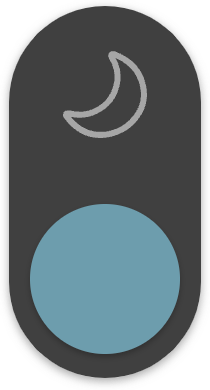
By Junius Ho Kwan-yiu and Kacee Ting Wong
The drug abuse problem is a demon-revealing mirror which allows us to gain a better understanding of the deep-rooted socio-economic and law enforcement problems in the US. The most important question is: how far is the drug abuse problem an agent in personal degradation, family disruption and community ruin? Based on the data provided by the National Survey on Drug Use and Health in 2020, the US government estimates that 37.3 million Americans aged 12 or older are current users of some kind of illicit drug. It is therefore no more realistic, and no less foolish, to expect that the traditional prohibition-and-imprisonment approach could solve the drug abuse problem.
First of all, we examine the effectiveness of the traditional prohibition-and-imprisonment approach in combating the drug abuse problem in the US. According to former US President Richard Nixon, the US spent as much on illegal drugs as the rest of the world combined in the early 1990's (Richard Nixon, Seize the Moment (NY: Simon & Schuster, 1992),p.291). Although several countries have implemented liberal reforms to amend their drug laws, the criminalization model has persisted in the US (Katja Franko, Globalization and Crime (LA: Sage, 2020),p.131).
Proponents of the liberal approach argue that the legalization of drugs would eradicate the illegal drug market and reduce the law enforcement costs and incarceration rates. It is worthy of note that the use of cannabis had already been handled leniently by the Danish criminal justice system in the 1960's (Jorgen Jepsen, 'Drugs and Social Control in Scandinavia : A Case Study in International Moral Entrepreneurship', in Harold H. Traver & Mark Gaylord (eds), Drugs, Law and The State (HK: HKU Press, 1992),p.35-36). In 2011, the high-level Global Commission on Drug Policy issued a report which in clear terms established that the global war on drugs has failed, with devastating consequences for individuals and societies around the world and recommended experiments in decriminalization (Katja Franko, ibid).
Since the US is a federal state, 13 American states have adopted liberal policies by decriminalizing the non-medical use of cannabis. But under federal law, marijuana remains illegal. Many conservative states still focus on criminalization in their drug laws, creating an obstacle to life-saving harm reduction services and the provision of accessible and affordable treatment for substance use disorders. According to the data from the Centers for Disease Control and Prevention, over 93,000 people died in 2020 from a drug overdose death.
Another tragedy caused by drug abuse is personal degradation. Strong evidence suggests that amphetamine and barbiturates are more likely to facilitate violence. Delusional states produced by toxic substances also increase the likelihood of impulsive violence. Though some Americans regard recreational marijuana (cannabis) as non-harmful substance, heavy use of cannabis may cause depression, nervousness, short temper and endocrine disorder. At present, marijuana is the most popular drug of abuse in the US.
If we look at the figures of drug-related homicides and fatal traffic accidents, we will come to the painful realization that throwing more harsh laws at the problem is a wrong approach. According to one estimate, about 10 percent of homicides in the US may be the result of drug use (Ronald Blackburn, The Psychology of Criminal Conduct (Chichester: John Wiley &Sons, 1993),p.231). Policy makers in the US should think outside the boundaries of the criminal justice system by reviewing the traditional prohibition-and-imprisonment approach and establishing an effective community response to drug problems.
Philippe Bourgois's ethnographic study In Search of Respect, is a powerful account of the lives of young crack dealers in El Barrio, a deeply marginalized neighborhood in the midst of the wealthy Manhattan. Without a chance to find decent blue-collar manufacturing jobs and explore employment opportunities in the service sectors, many Puerto Rican migrants have relied economically on the illegal drug economy. The Puerto Rican community is ruined by the drug problems. As Bourgois has pointed out, drugs are only a symptom of deeper structural problems. Self-destructive addiction is merely the medium for desperate people to internalize their frustration, resistance and powerlessness (P. Bourgois, In Search of Respect: Selling Crack in El Barrio (Cambridge: CUP, 2003),p. 319). Similarly, in Los Angeles, the extensive drug economy is the main employer of youngsters from the minority communities. The Black and Latino communities are the victims of the drug problem in Los Angeles.
Apart from crack dealers and traffickers, drug addicts are also imprisoned for possession of dangerous drugs because of the harsh drug laws. Half of all persons incarcerated under State jurisdiction were convicted of non-violent offences and 20 percent for drug offences, mostly the possession of cannabis. It seems commonsensical that decriminalization of soft drugs is a step of progress in decreasing the prison population, and thus diverting more financial resources to mandatory treatment programs.
The high rate of incarceration in relation to drug-related crimes has exerted an adverse effect on the families of drug offenders. The growth of the poverty-ridden family today is linked directly with the growth of the family headed by single mothers. Children of single-parent homes are more likely to have emotional and academic problems. Worse still, problems with children from fatherless families can continue into adulthood. These children are three times more likely to end up in jail by the time they reach age 30 than are children raised in intact families in the US.
It is also worth noting that millions of Americans are addicted to prescription medications. Anti-depressants, amphetamines and opiate painkillers are seen as the convenient solution to an incredibly wide array of ailments and patients rarely hesitate to take them. Some suggest that those who do not have strong coping skill to deal with stress are more likely to become addicted to tranquilizers. And roughly 21 to 29 percent of patients prescribed opiate painkillers for chronic pain misuse them. To conclude, drug abuse and addiction to prescriptive medications have reinforced a growing belief that the US is a sick nation.
*Fact checked and source verified by Kacee Ting
Junius Ho Kwan-yiu is a Legislative Council member and a solicitor.
Kacee Ting Wong is a barrister, part-time researcher of Shenzhen University Hong Kong and Macao Basic Law Research Center, co-founder of the Together We Can and Hong Kong Coalition.
The views do not necessarily reflect those of DotDotNews.




















Comment